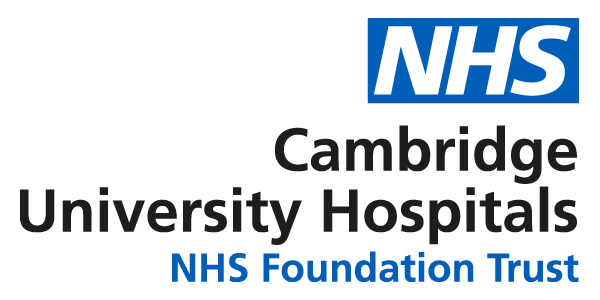Information for patients at 3 weeks post operation
Now that you are 3 weeks after surgery, the tendon repair is beginning to gain strength, but is not yet strong enough for full normal movement or use. This leaflet will explain how you can progress your exercises and functional use without risking damage to your tendon.
This advice and change in exercises should only be started once your hand therapist has confirmed you are moving well enough to progress.
Splint advice
From 3 weeks after surgery you may begin to use your hand in medium activities whilst wearing both splints.
You may remove the wrist splint, but must continue to wear the yoke finger splint during light activities only. Examples of activities are provided below.
|
Light Activities- wearing yoke finger splint only |
Medium Activities- wearing both wrist and yoke finger splint |
Heavy Activities- from week 10 as advised by your therapist |
|---|---|---|
|
Light Activities- wearing yoke finger splint only Using the phone |
Medium Activities- wearing both wrist and yoke finger splint Combing hair / shaving |
Heavy Activities- from week 10 as advised by your therapist Using a knife |
|
Light Activities- wearing yoke finger splint only Handling money |
Medium Activities- wearing both wrist and yoke finger splint Ring-pull on can |
Heavy Activities- from week 10 as advised by your therapist Ironing |
|
Light Activities- wearing yoke finger splint only Playing cards |
Medium Activities- wearing both wrist and yoke finger splint Using a fork or knife |
Heavy Activities- from week 10 as advised by your therapist Hoovering |
|
Light Activities- wearing yoke finger splint only Zips/light clothes/shoe laces |
Medium Activities- wearing both wrist and yoke finger splint Putting on socks, tights |
Heavy Activities- from week 10 as advised by your therapist Cooking, lifting a saucepan/kettle/using a tin opener Lifting children |
|
Light Activities- wearing yoke finger splint only Writing, signing your name |
Medium Activities- wearing both wrist and yoke finger splint Hanging up clothes, wiping up |
Heavy Activities- from week 10 as advised by your therapist Lifting boxes/carrying shopping |
|
Light Activities- wearing yoke finger splint only Light switch |
Medium Activities- wearing both wrist and yoke finger splint Sweeping up |
Heavy Activities- from week 10 as advised by your therapist Making a bed |
|
Light Activities- wearing yoke finger splint only Using remote control |
Medium Activities- wearing both wrist and yoke finger splint Reading books |
Heavy Activities- from week 10 as advised by your therapist Hand washing clothes |
|
Light Activities- wearing yoke finger splint only Reading a newspaper |
Medium Activities- wearing both wrist and yoke finger splint Holding a glass |
Heavy Activities- from week 10 as advised by your therapist Gardening |
|
Light Activities- wearing yoke finger splint only Fastening/unfastening buttons |
Medium Activities- wearing both wrist and yoke finger splint Unscrewing jar lids/holding a cup/holding a pint glass |
Heavy Activities- from week 10 as advised by your therapist Sports: rugby, football, swimming, golf Cleaning a car |
|
Light Activities- wearing yoke finger splint only |
Medium Activities- wearing both wrist and yoke finger splint |
Heavy Activities- from week 10 as advised by your therapist Cleaning a car |
|
Light Activities- wearing yoke finger splint only |
Medium Activities- wearing both wrist and yoke finger splint |
Heavy Activities- from week 10 as advised by your therapist Lifting children |
Wrist exercises beginning from week 3
The yoke finger splint must be worn for all exercises.

Only once the above exercise feels comfortable are you advised to begin the exercise below.

Please continue all previous finger exercises with the yoke splint on.
Scar care
It is important to continue with regular, firm scar massage as advised. If you are unsure of the technique or how often to complete it then please discuss this with your therapist.
Contacts/further information
The Occupational therapy department is located in clinic 30 in the Addenbrooke’s Treatment Centre (ATC).
The Occupational therapy reception telephone number: 01223 216769
References/sources of evidence
Collocott SJ, Kelly E, Ellis RF(2018). Optimal early active mobilisation protocol after extensor tendon repairs in zones V and VI: A systematic review of literature. Hand Therapy;23(1):3-18
W. Howell, W.H. Merritt, S.J. Robinson(2005): Immediate controlled active motion following zone 4-7 extensor tendon repair. Journal of Hand Therapy. 18 (2):182-190
Svens, E. Ames, K. Burford, et al(2015): Relative active motion programs following extensor tendon repair: a pilot study using a prospective cohort and evaluating outcomes following orthotic interventions. Journal of Hand Therapy. 1:11-19
We are smoke-free
Smoking is not allowed anywhere on the hospital campus. For advice and support in quitting, contact your GP or the free NHS stop smoking helpline on 0800 169 0 169.
Other formats
Help accessing this information in other formats is available. To find out more about the services we provide, please visit our patient information help page (see link below) or telephone 01223 256998. www.cuh.nhs.uk/contact-us/accessible-information/
Contact us
Cambridge University Hospitals
NHS Foundation Trust
Hills Road, Cambridge
CB2 0QQ
Telephone +44 (0)1223 245151
https://www.cuh.nhs.uk/contact-us/contact-enquiries/

